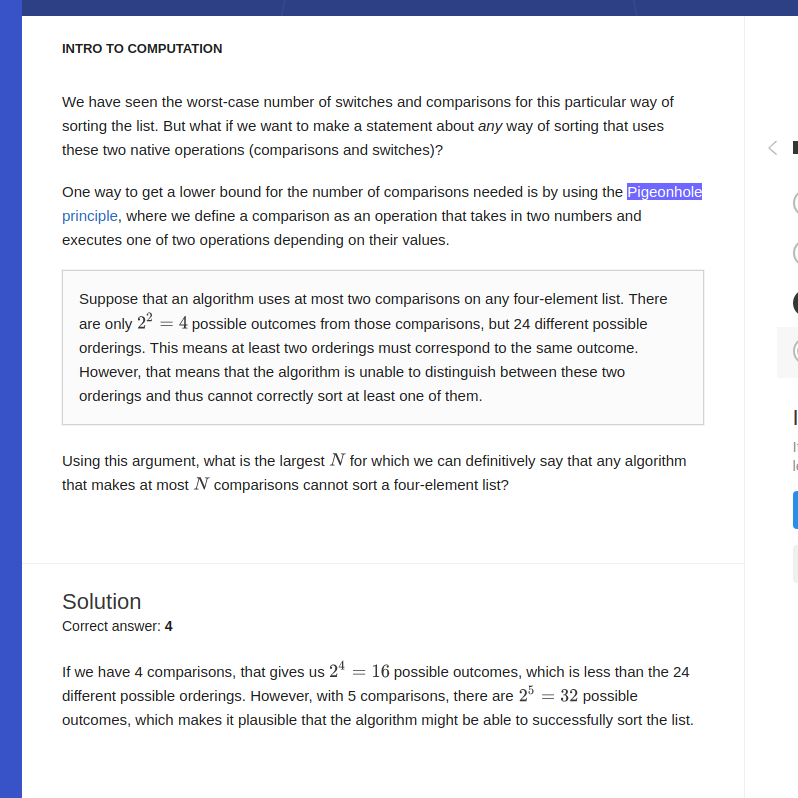Pigeonhole principle and algorithm
 In fifth slide of Quiz 1(Intro to Computation ,under computer science algorithm course and Algorithm section ) there is a concept of Pigeonhole principle used to find minimum number of comparison required to sort four elemnt list. how pigeonhle principle is applied here and from where that possible outcomes came?Can anyone explain that?
In fifth slide of Quiz 1(Intro to Computation ,under computer science algorithm course and Algorithm section ) there is a concept of Pigeonhole principle used to find minimum number of comparison required to sort four elemnt list. how pigeonhle principle is applied here and from where that possible outcomes came?Can anyone explain that?
No vote yet
1 vote
Easy Math Editor
This discussion board is a place to discuss our Daily Challenges and the math and science related to those challenges. Explanations are more than just a solution — they should explain the steps and thinking strategies that you used to obtain the solution. Comments should further the discussion of math and science.
When posting on Brilliant:
*italics*or_italics_**bold**or__bold__paragraph 1
paragraph 2
[example link](https://brilliant.org)> This is a quote# I indented these lines # 4 spaces, and now they show # up as a code block. print "hello world"\(...\)or\[...\]to ensure proper formatting.2 \times 32^{34}a_{i-1}\frac{2}{3}\sqrt{2}\sum_{i=1}^3\sin \theta\boxed{123}Comments
So, suppose you have been given four (assume them to be distinct, for convenience) numbers and you want to sort them. In the interest of saving time and creating faster algorithms, one might wonder what is the minimum number of comparisons that an algorithm needs to make so that it can correctly sort the numbers.
Does this argument make sense to you now? I agree that this argument may not be familiar to one when they are taking their first introduction to algorithms, and hence, I'd encourage you to ask questions.